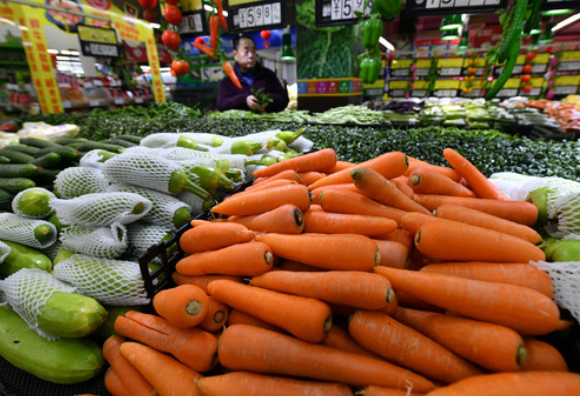BEIJING, April 10 (Xinhua) -- Retreating food costs in China eased consumer inflation in March, while factory prices fell deeper over depressed demand due to the novel coronavirus outbreak, official data showed Friday.
China's consumer price index (CPI), the main gauge of inflation, grew 4.3 percent year on year last month, moderating from 5.2 percent in February as economic activities including transport and logistics gradually recovered after effective epidemic containment in the country, according to data from the National Bureau of Statistics.
On a monthly basis, consumer prices went down 1.2 percent. Food prices, which account for nearly one-third of China's CPI, headed down 3.8 percent last month.
In breakdown, grain and oil prices were stable, while vegetable prices fell 12.2 percent over rising supplies in spring. Pork prices started to soften as government measures to boost supplies to mitigate the impacts of the African swine fever and the coronavirus epidemic took effect.
Prices of the staple meat in China dropped 6.9 percent from a month earlier.
However, compared with the same period last year, food prices remained elevated due to the epidemic, rising 18.3 percent year on year and contributing 3.7 percentage points of the index's yearly growth.
In the first quarter, the CPI went up 4.9 percent year on year on average.
As hoarding demand wanes and work resumptions quicken, supply and demand will become more balanced and overall inflation will keep stable, Wen Bin, chief researcher with China Minsheng Bank, said in a research note.
Friday's data also showed China's producer price index, which measures inflation at the factory gates, fell 1.5 percent year on year last month, widening from a 0.4-percent drop in February.
Aside from dampening demand from the impacts of the epidemic, the recent rout in the international oil market, which incurred shocks to related industrial sectors, was another key driver for the price deflation.
Among major industries, prices for oil and natural gas extraction saw the fastest retreat in March, plunging by 21.7 percent year on year.
Prices for the processing of oil, coal and other fuel slumped 10.6 percent year on year, while those of chemical raw materials and chemical products manufacturing went down 5.3 percent over one year ago in March.
Given headline consumer inflation is set to moderate further, Chinese policymakers will have more leeway in monetary policy and further cuts in banks' reserve requirement ratios (RRR) and benchmark deposit rates would still be necessary, according to Wen.
Facing potential economic shocks from the epidemic, China's financial authorities pledged to pay more attention to policy flexibility to keep reasonably sufficient liquidity and appropriately raise the fiscal deficit ratio to counter the impacts.
In the latest step, China's central bank on April 3 announced a decision to cut the RRR for small and medium-sized banks by 100 basis points in two phases, a move that is expected to unleash around 400 billion yuan (about 57 billion U.S. dollars) of long-term capital into the market.
The decision marked the third RRR cuts the central bank has announced this year to shore up the economy. The previous cuts, announced on Jan. 1 and March 13 respectively, released a total of 1.35 trillion yuan of liquidity into the market.




 A single purchase
A single purchase









